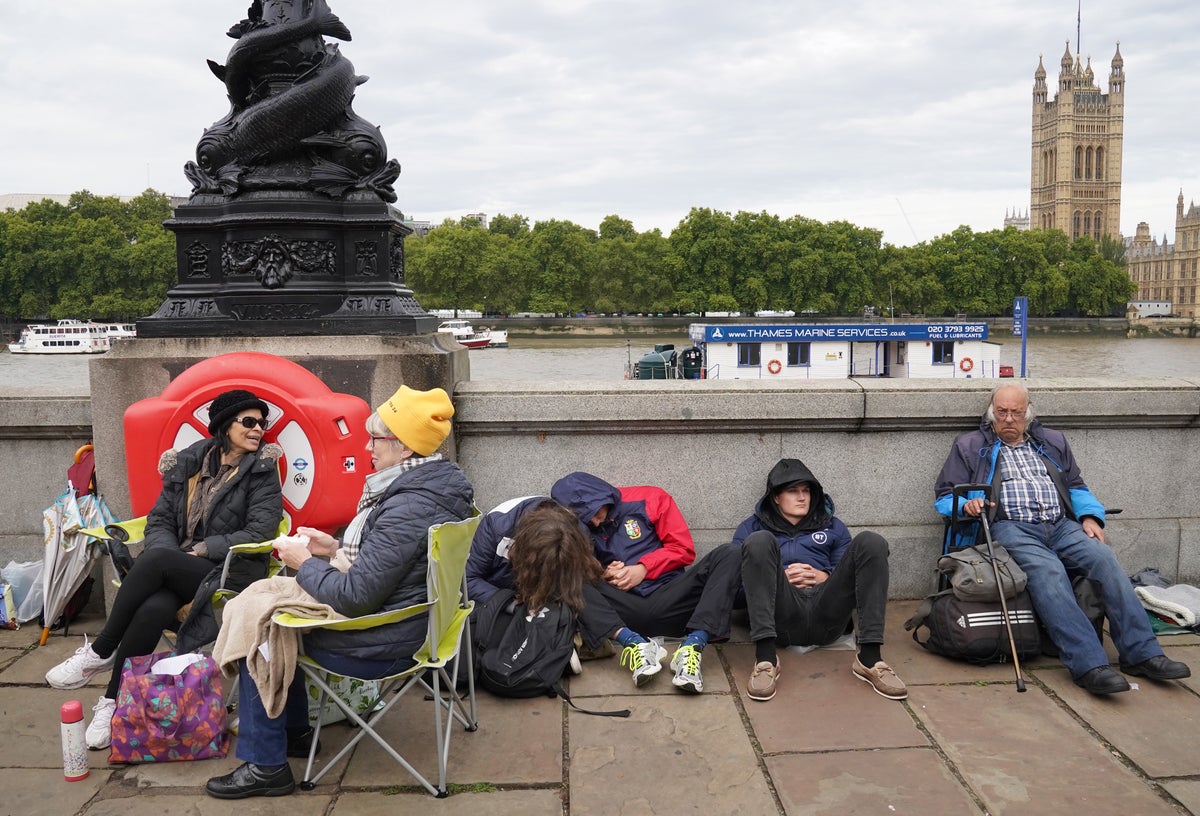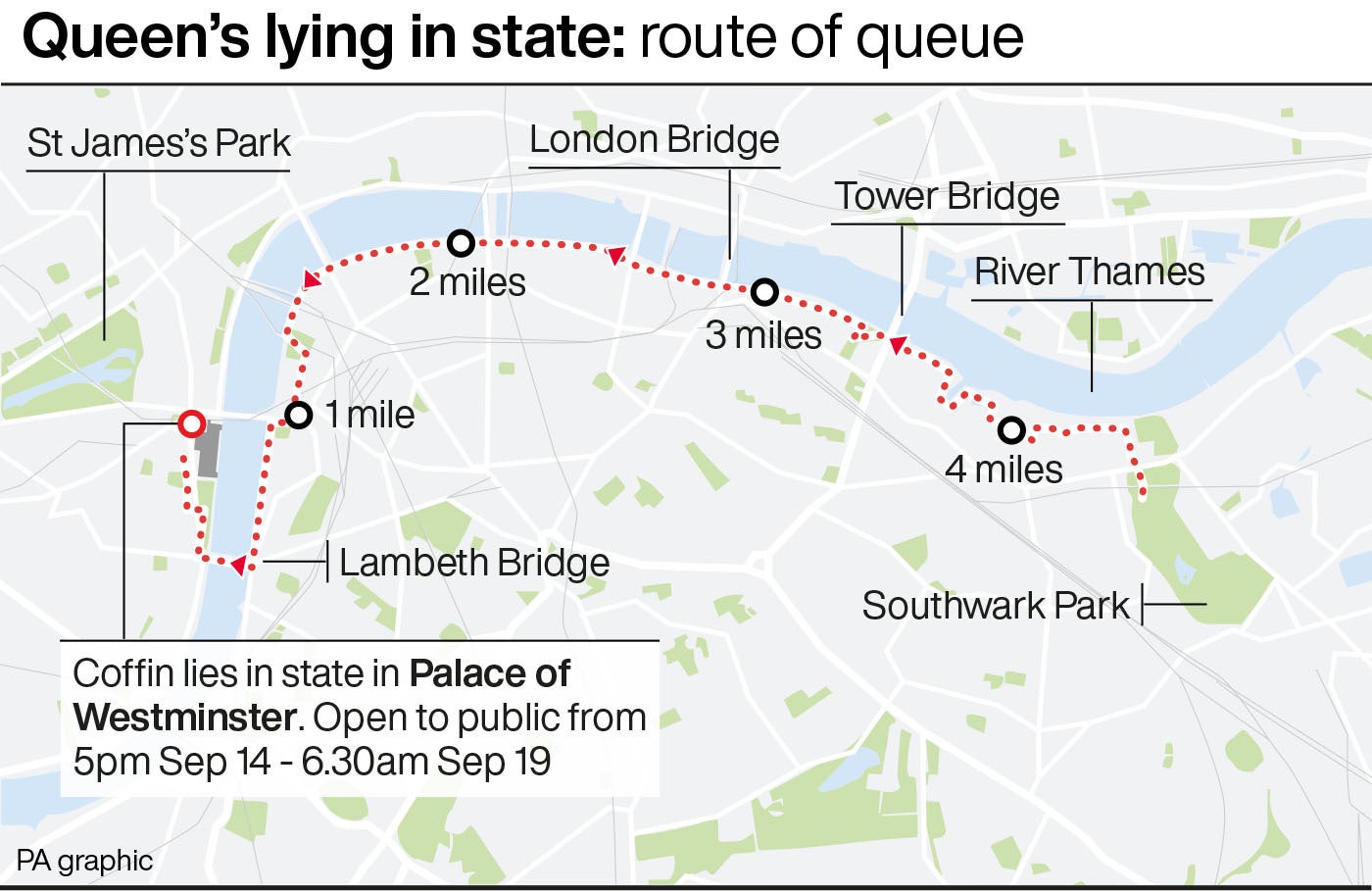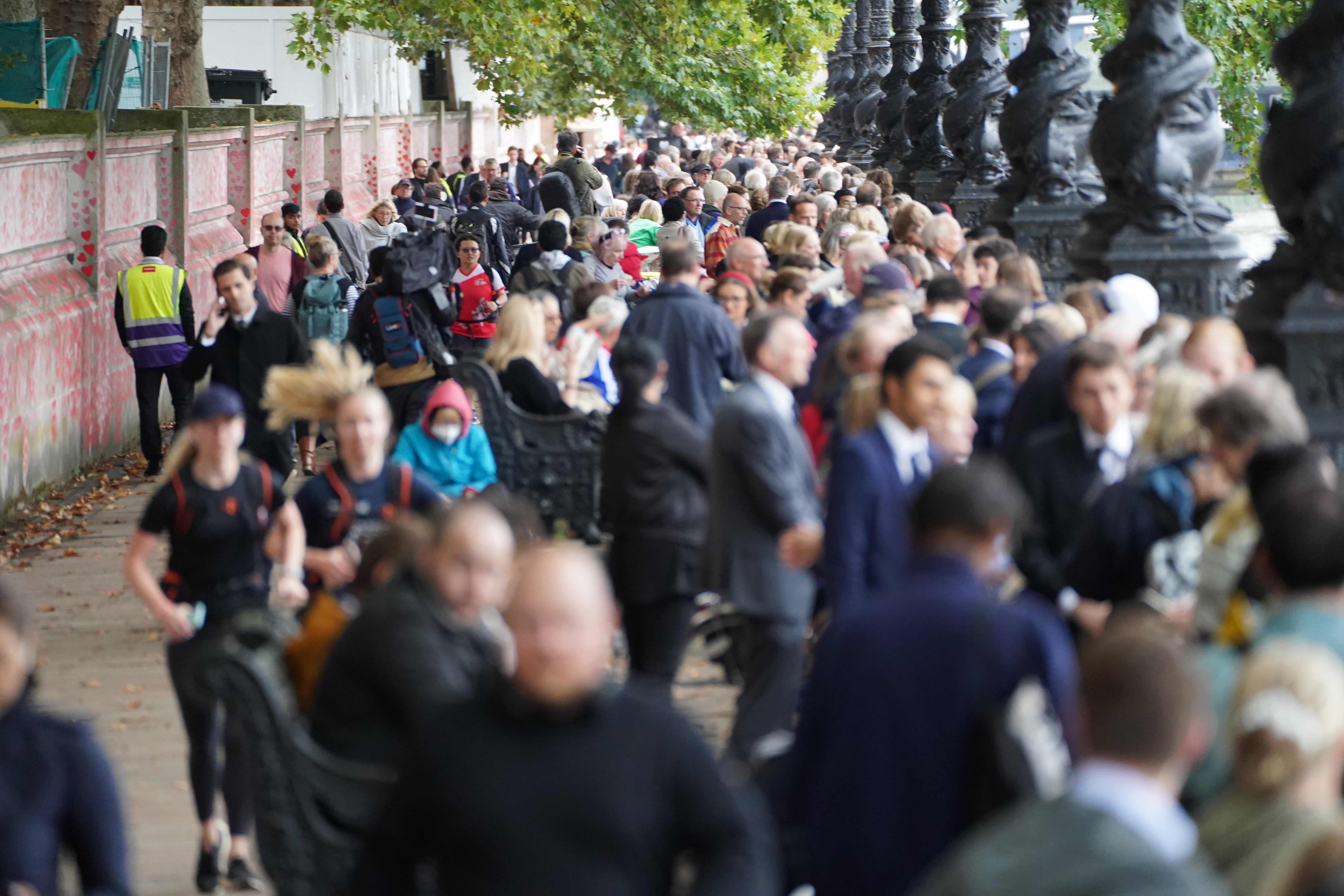
Thousands of people are paying their last respects to the Queen after Westminster Hall was officially opened to the public.
A queue of people almost three miles long started moving gradually forward on Wednesday as well-wishers saw the monarch lying in state from 5pm.
The line has the capacity to stretch for 10 miles, but there is no guarantee that everyone who joins it will get to file past the coffin.

Nevertheless, people turned out in droves for the opportunity to say a personal farewell ahead of the Queen’s funeral on Monday.
The Department for Digital, Culture, Media and Sport is running a live queue tracker to pinpoint the end of the line which can be viewed at youtube.com/watch?v=9NpZuGxSgZY
At 5pm, the tracker showed the queue was approximately 2.9 miles long, stretching past London Bridge.
To help avoid disappointment, it is understood that entry to the back of the queue may be closed early, although it is too early to estimate when that might happen.
Numbers will be monitored towards the end of the lying in state period, which must be completed by 6.30am on Monday.
Entry to the line will be paused if the queuing infrastructure – stretching 6.9 miles from Victoria Tower Gardens to Southwark Park, with a further three miles in the park itself – reaches capacity.
There will be more than 1,000 volunteers, stewards, marshals and police officers on hand at any one time as people brave the wait on the banks of the Thames.
They include 779 professional stewards per shift, assisted by 100 civil service volunteer marshals, 40 adult scouts, and 30 members of the First Aid Nursing Yeomanry charity, as well as Metropolitan Police officers.
There will be a separate accessible route running from Tate Britain for people less able to wait for a long period of time, with timed entry slots issued for a line along Millbank to the Palace of Westminster.
No proof of disability will be required to use this route, with marshals on hand to make sure people are in the correct line and two British Sign Language interpreters to help.
It’s just nice to be a part of this. It’s exciting, I’m dead excited, I’m like a little kid— Joyce Dawson, from Middlesbrough
Joyce Dawson, 54, from Middlesbrough, had never visited London before, but said she was “inspired” to travel down for the lying in state after seeing the first people in the queue being interviewed on TV on Tuesday evening.
She told the PA news agency: “I texted my daughter and said, ‘We have to go to London tonight’, so we’re here.
“It was a spur-of-the-moment thing.”
She and her daughter Shelby, 26, who had also never been to the capital before, got on a midnight coach from Middlesbrough and joined the queue at about 8am.
Joyce Dawson added: “It’s just nice to be a part of this. It’s exciting, I’m dead excited, I’m like a little kid.”

Duncan Rasor, a former member of the Balmoral Guard who met the Queen while serving in Scotland, wore his military medals and Glengarry headdress as he queued.
The 48-year-old, who served in the Argyll and Sutherland Highlanders, told PA that he wanted to pay his respects “for everything that she’s done”.
He described spending time with the royal family as an “extraordinary privilege”, and added: “Even though they are on holiday up in Balmoral, they are still working, and it just never stops.
“I think… something which is starting to become more apparent to people is quite how hard Her Majesty has worked for her entire life.”
Kush Sonigra, who lives in London, was spending his 24th birthday in the queue.
He told PA: “Well fortunately, from work I get the day off for my birthday, so I thought I’d get involved and see what the hype is about, get involved with the event.
“There’s a family dinner table so I’m hoping, depending on how late I finish here, I might be able to make it for that. Otherwise, we will postpone that to the weekend.”
He said his mother “is a little bit upset that I’m missing the family dinner, but I think she’ll understand”.
It is understood there will be an element of self-policing for people to keep their places in line.
They are being given a coloured and numbered wristband allowing them to leave for a brief time.
It is thought people will know those around them and be supportive when others need to step out.







